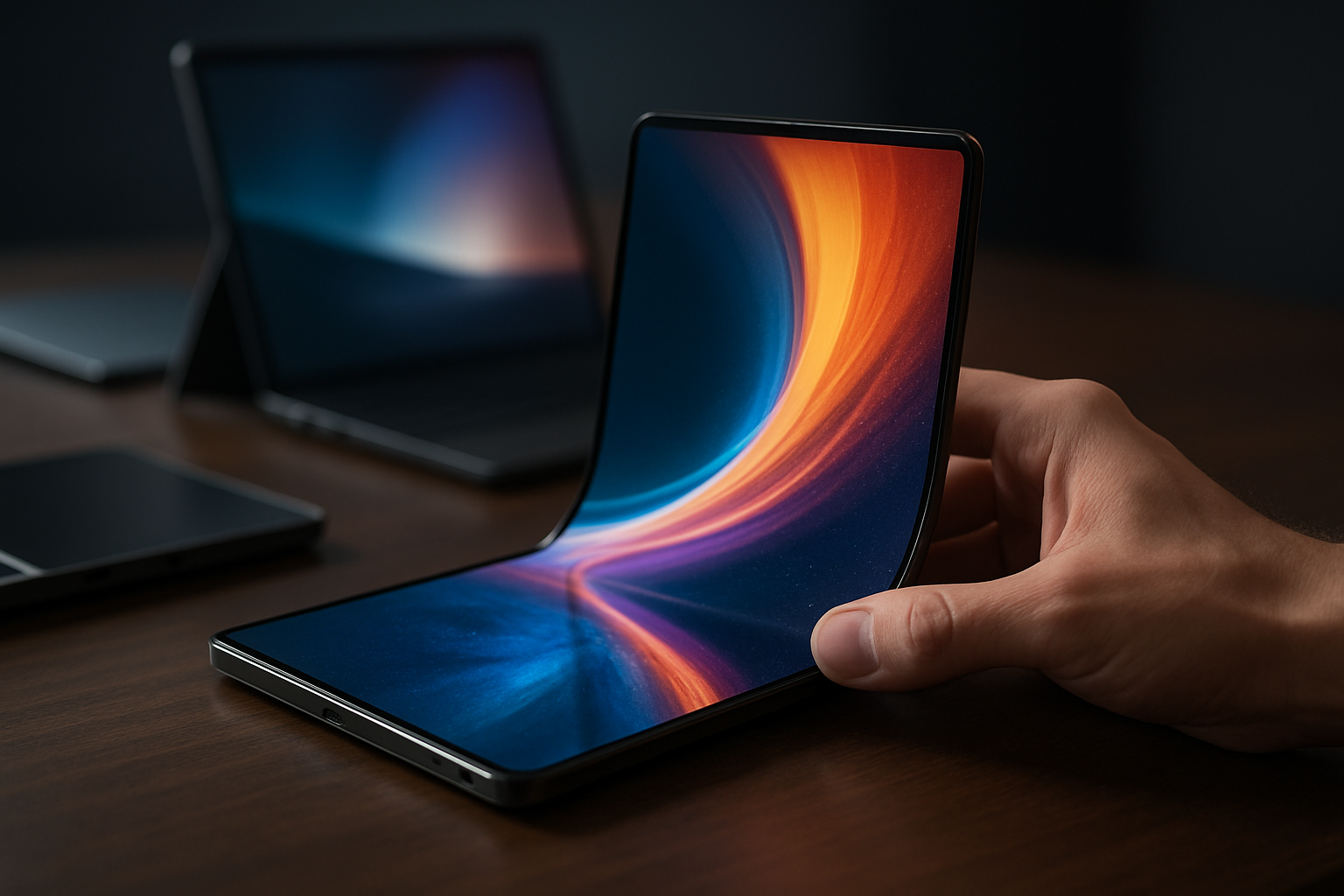A New Chapter in Tech: The Emergence of Foldable Gadgets
In the perpetually evolving realm of technology, a new trend has emerged with the potential to redefine our interaction with digital devices. This is the world of foldable gadgets: smartphones, laptops, and tablets with screens that bend, fold, and transform, offering a unique blend of portability and versatility.

A Nod to the Past: The Genesis of Foldable Technology
Foldable technology may seem like a recent innovation, but its roots can be traced back to the 1970s. The concept of “foldability” first surfaced with the development of flexible electronics, which aimed to create devices that could withstand physical stress without breaking. Foldable tech took a significant leap in the early 2000s when researchers started experimenting with flexible displays. These developments, however, remained largely confined within the research labs.
The Turning Point: Samsung’s Galaxy Fold
The paradigm shift came in 2019 when Samsung unveiled the Galaxy Fold, the world’s first commercially available foldable smartphone. Despite a rocky start — with initial models suffering from durability issues — the Galaxy Fold marked an essential milestone in bringing foldable tech to the mainstream. Today, other tech giants like Motorola and Huawei have also entered the foldable smartphone arena, signaling a growing interest in this technology.
Foldable Tech Today: Beyond Smartphones
Foldable technology isn’t just limited to smartphones. We’re seeing emerging trends in the form of foldable laptops and tablets, breathing new life into these devices. For instance, Lenovo’s ThinkPad X1 Fold, launched in 2020, is the world’s first foldable PC, offering the functionality of a laptop with the portability of a tablet.
Market Impact and Price Assessment
Foldable gadgets are undoubtedly a premium category of tech products. Samsung’s Galaxy Fold, for instance, was launched at a price of nearly $2000. However, as the technology matures and competition intensifies, we can expect prices to become more consumer-friendly. In terms of market impact, foldable gadgets are projected to carve a sizeable niche in the global tech market. According to Display Supply Chain Consultants, the foldable display market could be worth $70 billion by 2025.
The Future of Foldable Technology
Foldable tech is still in its infancy, and there’s plenty of room for innovation. Future advancements could see more robust and durable foldable devices, with screens that can withstand thousands of folds. Moreover, the development of rollable and stretchable screens could further expand the scope of foldable technology.
In conclusion, foldable gadgets represent a promising frontier in the tech world. They offer a unique blend of novelty and practicality, combining the power of larger screens with the convenience of portability. While there are challenges to overcome, the progress made so far indicates that foldable technology is here to stay. And as it evolves, it’s set to make our digital experiences more flexible, immersive, and dynamic than ever before.





